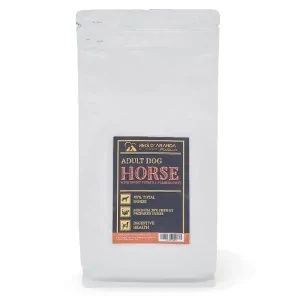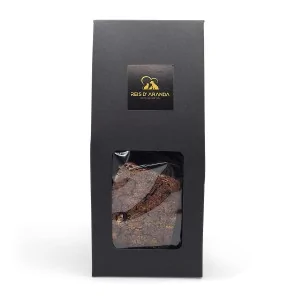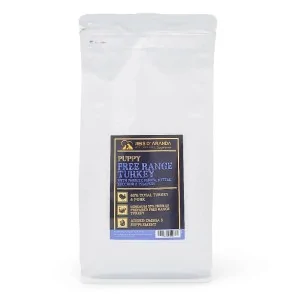Its name says it all: the Vienna blue rabbit comes from Austria. Not only is it beautiful with its shiny blue-grey...
THE ROMANIAN SHEPHERD DOG OF THE CARPATHIANS
INTRODUCTION
Devoted and well-mannered, he is a courageous dog, capable of standing up to a bear in his attempt to protect flocks of sheep or his master from harm.
THE ORIGIN OF THE ROMANIAN SHEPHERD DOG OF THE CARPATHIANS
Alfred Edmund Brehm (1829-1885) wrote about the breed in Animal's Life. The first written account of the breed appears in Veterinary Science Magazine, Year XV, No. 2.
In March 1998, a group of admirers of the breed founded the ‘Carpathian Shepherd Dogs Club’, later renamed the ‘National Carpathian Shepherd Dog Breeders Club’. The club noted the existence of many Carpathian Shepherd Dogs in Rucăr, Argeș, which are considered to be the ancestors of today's Carpathian Shepherd Dogs.
In March 2003, in Bistriţa, an important meeting on the development of the breed was held and on 6 July 2005 in Buenos Aires, the provisional homologation of the breed was approved.
In 2005 the first official standard was published by the Fédération Cynologique Internationale, which was modified and thus the final version of the standard was published in 2015.
Although not proven, it is speculated that the various existing breeds of shepherd dogs in the Carpathian Mountains, as well as other breeds of mountain cattle dogs, are descended from specimens developed around 9,000 years ago in Mesopotamia accompanying the domestication of sheep and goats in that region.
THE STANDARD OF THE ROMANIAN SHEPHERD DOG OF THE CARPATHIANS
GENERAL APPEARANCE: This is a rather large dog, agile, never heavy, his general appearance is that of a vigorous dog. His body is rectangular, the croup is broad, slightly sloping, the ribcage is broad and high, the shoulders long and slightly sloping. Sexual dimorphism is well marked, males should be taller and larger than bitches.
IMPORTANT PROPORTIONS:
- The length of the skull is slightly more than or equal to half the total length of the head.
- The length of the body is always greater than the height at the withers. The lumbar region of bitches may be slightly longer.
- The height of the chest corresponds to approximately half the height at the withers.
HEAD: Lupoid type.
CRANIAL REGION: The Carpathian Shepherd Dog is a mesocephalic dog, with a strong, but not heavy head. The forehead is broad and slightly bulging. The skull is broadest between the ears and tapers progressively towards the naso-frontal depression.
The frontal furrow is fairly long and sufficiently well marked.
STOP: Moderate, never too pronounced, nor too shy.
FACIAL REGION:
TRUFFLE: Large, broad, always black.
Muzzle: Powerful, with an approximately oval profile, slightly truncated. The length of the muzzle is slightly less than the length of the skull or at most equal.
BELLOWS: Thick, well pigmented, well stretched, with a well closed corner.
JAWS / TEETH: Jaws strong, solid and straight. The dentition is powerful, scissor-jointed, the incisor arches are slightly rounded.
CHEEKS: Thin. Masseters powerful, never protruding. The skin is well stretched.
EYES: Almond-shaped, slightly oblique, not too large in relation to the dimensions of the skull, their colour is very dark. Neither protruding nor sunken in the sockets. The eyelids are black and blend well with the shape of the eyeball.
EARS: Triangular, not too large, set slightly higher than the line of the eye. Set close to the cheeks. The tip is slightly rounded.
NECK: Muscular, powerful, of medium length. Its angle is about 50° to the horizontal.
BODY: Vigorous, well developed, slightly rectangular.
UPPER LINE: Straight and firm.
HEIGHT AT THE CROSS: Not very marked.
BACK: Medium length, straight, solid and muscular.
LOIN: Powerful, muscular, but not too broad. Of moderate length, neither too long (upper margin not firm) nor too short. Croup: Muscular and broad, of medium length. Slightly sloping, never fleeing.
CHEST: Fairly broad, well developed and well sprung to elbow level. Ribs solid, well sprung, never barrel-shaped.
BOTTOM LINE : Moderately upward, belly raised, neither tucked up nor sagging.
TAIL: Rather high, bushy, well furnished with abundant hair. At rest, it is low, straight or slightly sabre-shaped, reaching to the point of hock. When the dog is attentive or in action, it is raised and may extend beyond the level of the back; it is neither stretched nor curled over the back.
LIMBS
FOREQUARTERS: Strong boned.
GENERAL APPEARANCE: Seen from the front or in profile, the forelegs are straight and perpendicular to the ground.
Shoulders: Solid, moderately sloping.
ELBOWS: Close to the body, turning neither in nor out.
FOREARM: Straight, very strong, oval in profile.
Pasterns: Short, slightly sloping.
HANDS: Oval, solid, compact.
HINDQUARTERS: Muscular, with solid bone and good angulation.
GENERAL APPEARANCE : Well plumb.
Upper thigh: Broad, well muscled.
LEGS: Powerful, muscular, of medium length.
HIP: Solid, firm, neither too high (leading to accentuation of the angulation of the stifle) nor too sloping.
METATARSE: Solid, vertical.
FEET: Oval, well developed and compact, slightly smaller than the front feet. Toes arched and close together. Any dewclaws should be removed, except in countries where this practice is forbidden by law.
The pads are elastic and strong.
GAIT / MOVEMENT: Loose, with good reach. The trot is vigorous and sustained. The limbs move in parallel planes.
SKIN: Pigmented, ash-coloured. Nose, rims of eyelids and lips should be black. Black or ashen nails are preferred.
COAT
HAIR: Rough, dense and tight. The undercoat is dense and soft.
With the exception of the head and the inner sides of the limbs, where the coat is short and smooth, the hair is abundant over the whole body, of medium length. On the neck, the back of the limbs and on the tail, the coat is longer, being typically abundant in these areas.
COLOUR: Charcoal sand (dark bay) with varying shades, often lighter on the sides and darker on the upper part of the trunk. Charcoal sand (dark bay) with white markings, preferably sparse.
SIZE AND WEIGHT:
HEIGHT AT WITHERS:
- Males: 65 - 73 cm
- Bitches: 59 - 67 cm
However, the general appearance is always the most important.
WEIGHT: In proportion to size, giving the impression of a powerful but not heavy dog.
FAULTS: Any departure from the foregoing points should be considered a fault and the seriousness with which the fault should be regarded should be in exact proportion to its degree and its effect upon the health and welfare of the dog.
SERIOUS FAULTS:
- Any deviation from the above and detrimental to utilization.
- Constitution too frail or too heavy.
- Eyes too light in colour.
- Lower eyelids too pendulous, exposing the eyeball. Lips too fleshy and overhanging corners.
- Considerable pigmentation defects.
- Excessive body length (more than 10%) and square body.
DISQUALIFYING FAULTS:
- Aggressiveness or extreme shyness.
- Any dog showing clear signs of physical or behavioural abnormalities.
- Apathetic dog.
- Clearly atypical dog, similar in appearance to the molosser.
- molossoid.
- Lacking one P3 and one other tooth. Lack of a canine, a P4, a molar or three or more teeth (except PM1 and M3).
- Overshot or undershot, pincer joint.
- Very thin bones.
- Ribcage not sufficiently developed.
- Lack of an undercoat, hair not short on the head and on the front sides of the limbs.
- Curly or griffon coat, wire coat, long, soft, silky coat, forming a clear parting on the midline of the body.
- Significant depigmentation of the eyelids, nose, skin or lips. Ocular heterochromia (eye of different colour).
- COLOUR: brown, mottled, yellow or with patches of these colours.
- Adult dogs under 62 cm for males and 58 cm for bitches.
N.B.:
- Male dogs should have two apparently normal testicles fully descended into the scrotum.
- Only functionally and clinically healthy dogs, with breed typical conformation, should be used for breeding.
THE HEALTH OF THE ROMANIAN SHEPHERD DOG OF THE CARPATHIANS
The Carpathian Sheepdog breed has a long tradition and development, which has resulted in the survival of those dogs best adapted to the harsh climate and terrain of the area from which they originate. This has meant that the specimens that can be found today stand out for their solid and very stable health, rarely presenting serious alterations.
THE PERSONALITY OF THE CARPATHIAN ROMANIAN SHEPHERD DOG
The Carpathian Shepherd Dog is appreciated not only for his herding skills, but also for his fierceness and courage in defending the flocks he has to guard. However, they are not at all aggressive dogs, on the contrary, they are noted for their affability and unconditional love for everything and everyone, being faithful and obedient as well as affectionate and noble. They only attack to defend themselves and their flock, which they look after with care and dedication.
In the family they are just as loving, although sometimes a little protective, but they are not usually distrustful unless they see a potential danger. They are very calm, well-balanced and attentive dogs. They adapt well to family life with children or animals, but they usually need some space to move around or they can get a bit crowded, so it is recommended to keep them in houses with gardens or grounds.
They are quite active, as they are used to guarding herds and also guiding them, sometimes over long distances in quite arduous terrain. This guarding task leads them to be quite territorial, so it is important to devote part of their training to this aspect. Their protective instincts sometimes make them aggressive if they feel there is an intruder in their territory. This does not mean that the breed is aggressive, as it does this as a defence, but it can be a problem if it learns to control it. It is therefore something that usually requires a lot of attention to get the dog used to unexpected visitors, strangers and interactions with unfamiliar people and animals. Socialisation of the puppy and the adult dog is therefore essential.
CONCLUSION
The Carpathian shepherd is appreciated not only for his herding skills, but also for his fierceness and courage in defending the flocks he has to guard. However, they are not at all aggressive dogs, on the contrary, they are noted for their affability and unconditional love for everything and everyone, being faithful and obedient as well as affectionate and noble. They only attack to defend themselves and their flock, which they look after with care and dedication.
Leave a comment
Log in to post comments
















